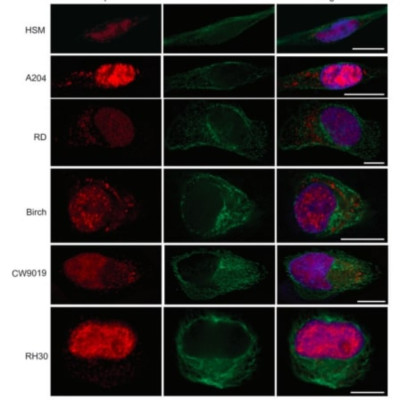Abstract
Rhabdomyosarcoma is the most common soft tissue sarcoma in children. Metastatic rhabdomyosarcoma in children has a 5-year event-free survival rate of <30%, and a recent clinical trial with irinotecan, a topoisomerase I inhibitor, failed to improve outcome. Therefore, it was surmised that failure of irinotecan may be the result of overexpression of the DNA repair enzyme tyrosyl-DNA phosphodiesterase (TDP1), which processes topoisomerase I-DNA complexes resulting from topoisomerase I inhibitor treatment. Using human tissue microarrays and gene expression arrays, a marked overexpression of TDP1 protein and mRNA in RMS tumors was observed. Critically, knockdown of TDP1 or inhibition of poly(ADP-ribose) polymerase-1 (PARP-1), an enzyme in the same complex as TDP1, sensitized rhabdomyosarcoma cell lines to analogues of irinotecan. Interestingly, BRCA1/2 mutations or altered expression was not detectable in rhabdomyosarcoma cells; however, TDP1 knockdown and PARP-1 inhibition alone were cytotoxic to a subset of rhabdomyosarcoma cells, suggesting that they harbor genetic lesions in DNA repair components that have synthetic lethal interactions with loss of TDP1 or PARP1 function. Furthermore, culturing embryonal rhabdomyosarcoma cells in serum/nutrient-restricted medium increased cellular cytotoxicity upon PARP-1 inhibition and was intrinsically cytotoxic to alveolar, though not embryonal rhabdomyosarcoma cells. The results of these studies suggest a compensatory role for TDP1 in rhabdomyosarcoma after topoisomerase-I based therapy and further demonstrate that TDP1 knockdown, PARP-1 inhibition, and dietary restriction have therapeutic validity.
Selective targeting of TDP1 and/or PARP-1 in rhabdomyosarcoma induces cytotoxicity and sensitizes to DNA damaging agents.
